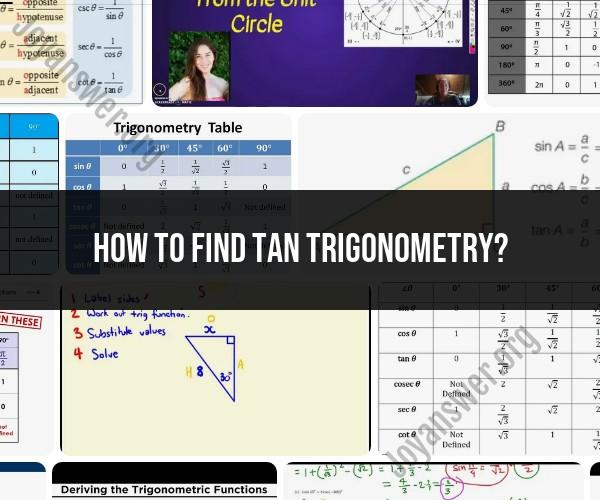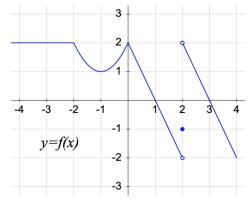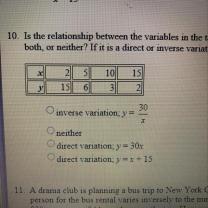How to find tan trigonometry?
In trigonometry, the tangent (tan) of an angle in a right-angled triangle is a ratio of the length of the side opposite the angle to the length of the adjacent side. The tangent function is often abbreviated as "tan."
The formula for finding the tangent of an angle θ in a right-angled triangle is given by:
Here's a step-by-step guide on how to find the tangent of an angle:
Identify the Angle:
- Determine the angle for which you want to find the tangent. Let's call this angle θ.
Identify the Sides:
- In a right-angled triangle, identify the sides relative to the angle θ.
- The side opposite θ is the side directly across from the angle.
- The side adjacent to θ is the side next to the angle but not the hypotenuse (the side opposite the right angle).
- In a right-angled triangle, identify the sides relative to the angle θ.
Apply the Tangent Formula:
- Use the formula for tangent:
Plug in Values:
- Substitute the lengths of the identified sides into the formula. Make sure to use consistent units for both sides.
Calculate:
- Perform the division to find the numerical value of the tangent.
For example, if you have a right-angled triangle with an angle θ and the lengths of the sides opposite and adjacent to θ are 4 units and 3 units, respectively, then the tangent of θ would be:
It's important to note that the tangent function is defined for all angles, not just those in right-angled triangles. However, in the context of right-angled triangles, the tangent represents the ratio of sides as described above. In general, trigonometric functions like tangent are widely used in mathematics and physics to analyze relationships between angles and sides in various geometric and real-world contexts.
What methods are employed to determine the tangent in trigonometry?
In trigonometry, there are several methods to determine the tangent of an angle:
1. Right Triangle Definition:
- This is the most basic method and applies only to right triangles.
- The tangent of an acute angle in a right triangle is defined as the ratio of the length of the opposite side to the length of the adjacent side.
- Formula: tan(θ) = opposite / adjacent
2. Unit Circle:
- The unit circle is a circle with radius 1 centered at the origin of the coordinate plane.
- Each angle θ corresponds to a point on the unit circle.
- The tangent of the angle θ is equal to the y-coordinate of the point on the unit circle that corresponds to the angle.
- This method requires knowledge of the coordinates of points on the unit circle or a tool like a calculator or graphing software.
3. Trigonometric Identities:
- Several trigonometric identities can be used to find the tangent of an angle if we know other trigonometric ratios of that angle or other angles.
- Some commonly used identities are:
- tan(θ) = sin(θ) / cos(θ)
- tan(θ) = 1 / cot(θ)
- tan(θ) = ± √(sec²(θ) - 1)
4. Inverse Trigonometric Functions:
- Inverse trigonometric functions, also known as arctangents, can be used to find the angle whose tangent is a given value.
- For example, if we know that tan(θ) = x, we can use the arctangent function to find θ such as:
- θ = arctan(x) or tan⁻¹(x)
5. Scientific Calculator:
- Most scientific calculators have buttons for calculating trigonometric functions, including the tangent function.
- This method is simple and convenient but requires a calculator.
The best method to use depends on the information you have available and the context of the problem. In some cases, a combination of methods may be necessary.












